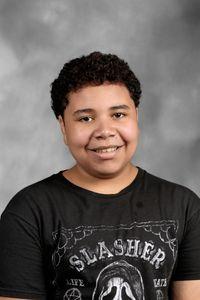
As AI technology evolves, public school districts use AI trackers for student assignments.
AI has been around for over 60 years and has helped teachers with grading, feedback, and analyzing student assignments. By using AI Detectors, educators can identify instances of plagiarism and ensure that students are doing their work. In addition, this proactive approach gives students a sense of accountability for their academic work. While AI has been used for educational purposes for 60 years, students started to use AI for school assignments in 2022 when ChatGPT was released. ChatGPT opened up new ways for completing school assignments since students can ask any question and get instant results about their researched topic. Instead of using AI for reference, students would tend to copy and paste what AI wrote and claim it as their own writing. Due to students using AI on assignments, public school districts took action on this event and started to use AI Detectors for students’ work. However, this action has affected students who actually wrote their own assignments.
Another relevant question is whether introducing AI detectors into public schools brings an ethical issue, opening up the discussion of fairness and accuracy. While the work done by AI detectors in finding instances of copied work is phenomenally effective, there is a chance of false positives- flagging students’ legitimate writing and creating classmates wording as AI, which would be unfair to students. As DHS English teacher Nicolette Nesi states, “three out of five AI detectors will show that students are using AI” This highlights the risk of inaccuracies within detector systems, which could lead to unfair grading and academic punishments. The issue emphasizes the need for careful consideration of AI limitations, particularly as it may affect students from diverse linguistic or cultural backgrounds.
Teachers using AI detectors on students’ assignments offer new ways to check for plagiarism. AI tools compare student work to a large database, find similarities, and notice changes in the writing style. AI tools do not only spot plagiarism but also encourage students to do their research and complete their work. One of the teachers at Danbury High School, Michaela Csvihinka, says “using AI detectors is unreliable because all students write differently.” AI detectors aren’t always accurate and can give a false result that can affect students’ grades. Csvihinka also states “If the students used AI, I ask them what is the meaning behind their writing.”
As AI continues to grow in the education system, it not only catches things like plagiarism but also pushes students to take responsibility and develop their ideas. AI can be used to determine student strengths and growth areas. Moving forward, rather than seeing AI as a policing tool, it is better to use it as a supportive resource that helps students refine their writing, strengthen their critical thinking skills, and learn to articulate their thoughts more clearly.























Jaz • Oct 28, 2024 at 11:23 am
Best article i’ve read on AI assistance! Good Job!